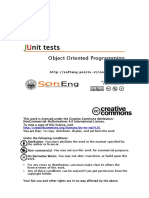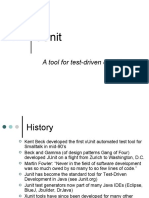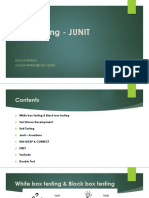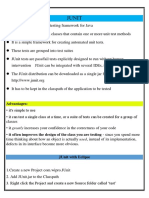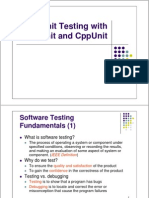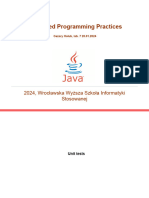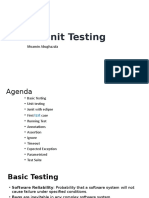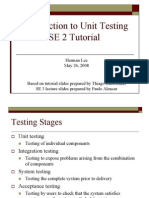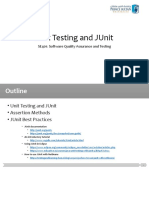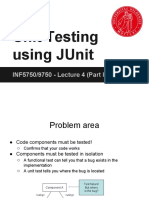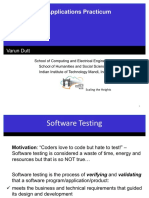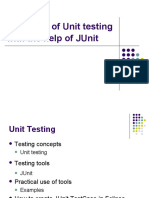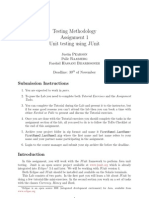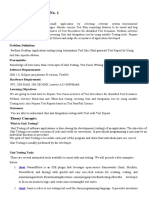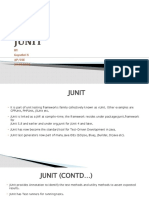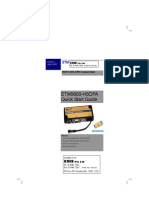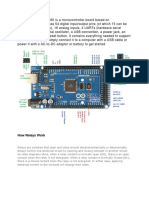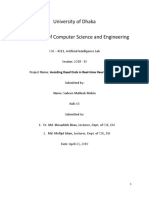0% found this document useful (0 votes)
94 views63 pagesConcepts of Software Engineering: Testing
The document discusses software testing concepts in XP (Extreme Programming) and unit testing. It provides 3 key points:
1) In XP, testing is done consistently throughout the development process with programmers designing tests first before writing code to fulfill the test requirements. Customers also provide acceptance tests at each stage.
2) Unit tests are automated tests written by developers to test functionality as they write code. Acceptance tests are specified by customers to test the overall system functionality.
3) Test-driven development involves writing tests before adding new features. Code is only accepted once all tests pass, ensuring new features work as intended.
Uploaded by
Sama A ShurrabCopyright
© © All Rights Reserved
We take content rights seriously. If you suspect this is your content, claim it here.
Available Formats
Download as PPTX, PDF, TXT or read online on Scribd
0% found this document useful (0 votes)
94 views63 pagesConcepts of Software Engineering: Testing
The document discusses software testing concepts in XP (Extreme Programming) and unit testing. It provides 3 key points:
1) In XP, testing is done consistently throughout the development process with programmers designing tests first before writing code to fulfill the test requirements. Customers also provide acceptance tests at each stage.
2) Unit tests are automated tests written by developers to test functionality as they write code. Acceptance tests are specified by customers to test the overall system functionality.
3) Test-driven development involves writing tests before adding new features. Code is only accepted once all tests pass, ensuring new features work as intended.
Uploaded by
Sama A ShurrabCopyright
© © All Rights Reserved
We take content rights seriously. If you suspect this is your content, claim it here.
Available Formats
Download as PPTX, PDF, TXT or read online on Scribd
/ 63
